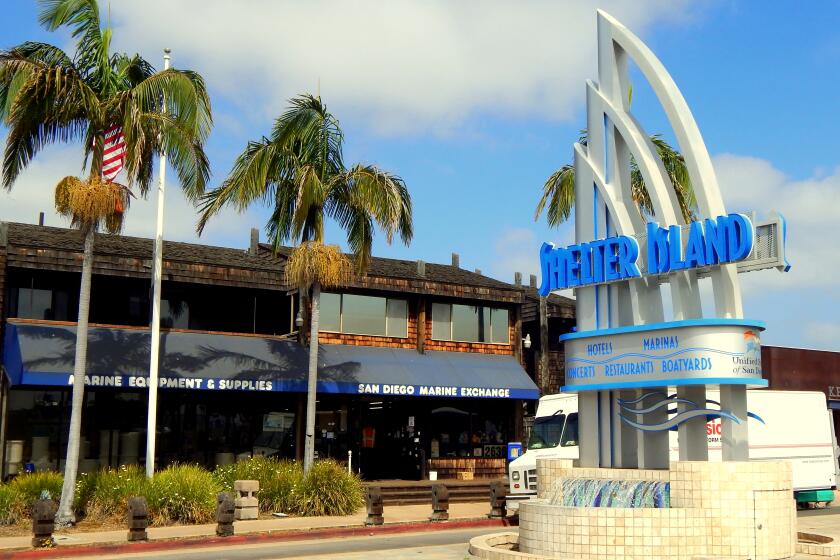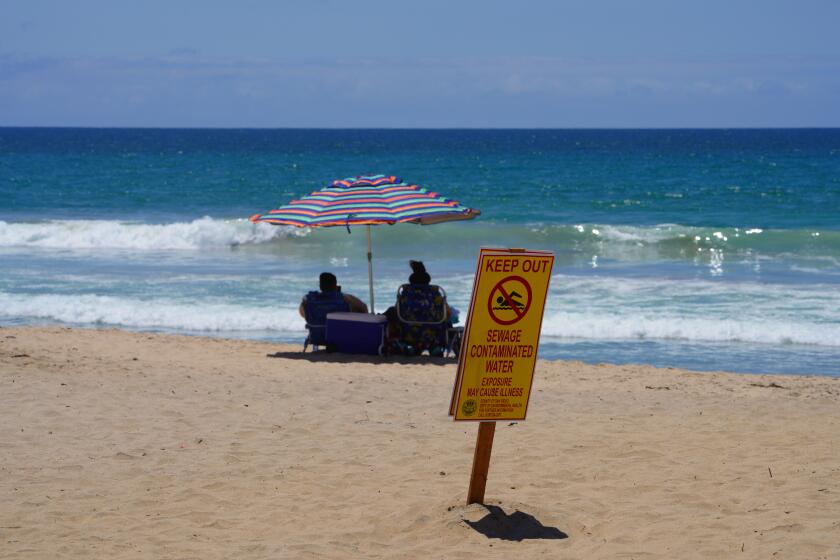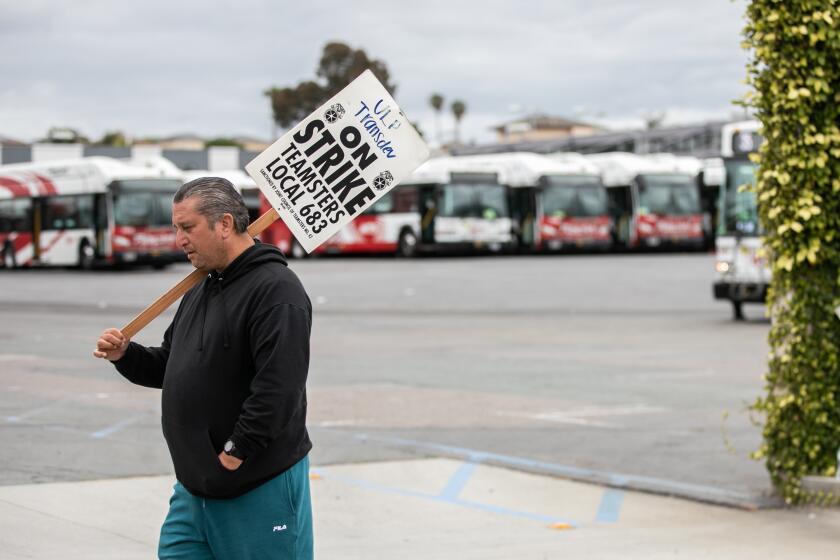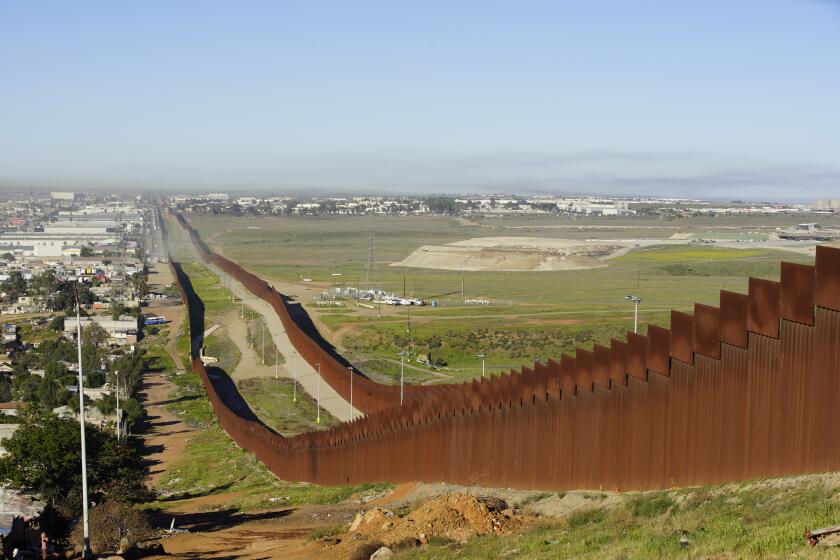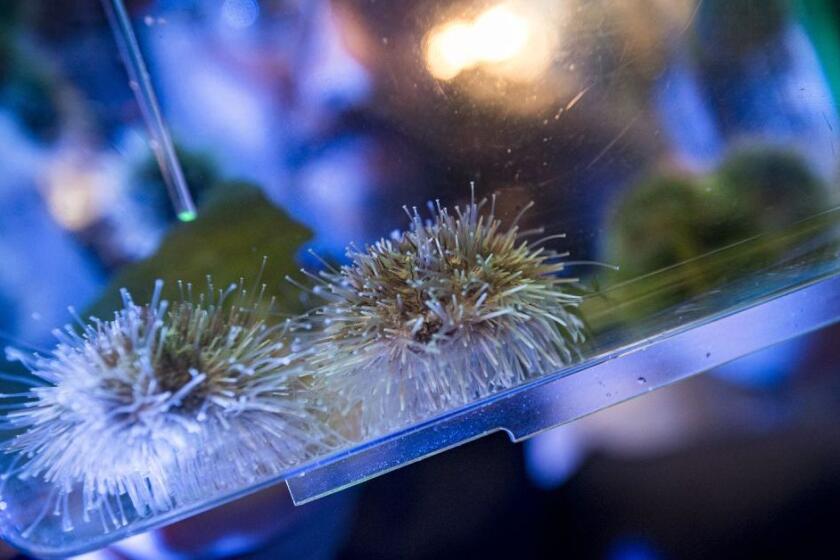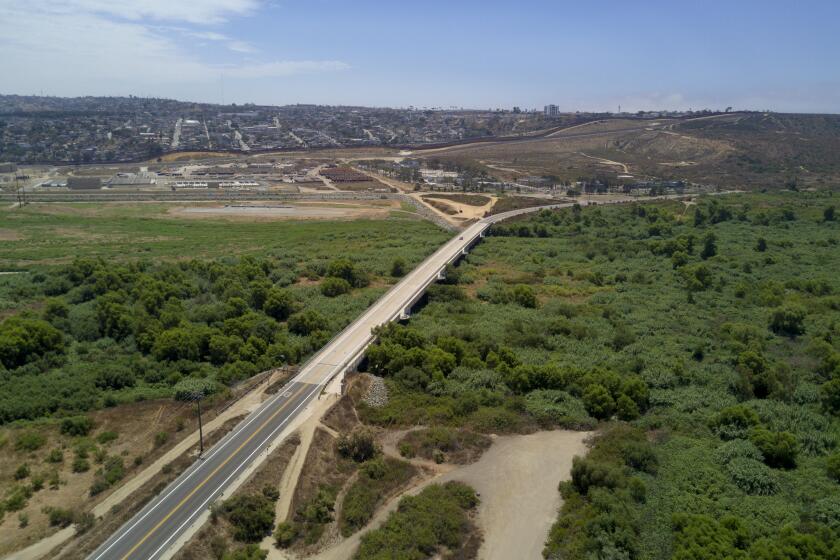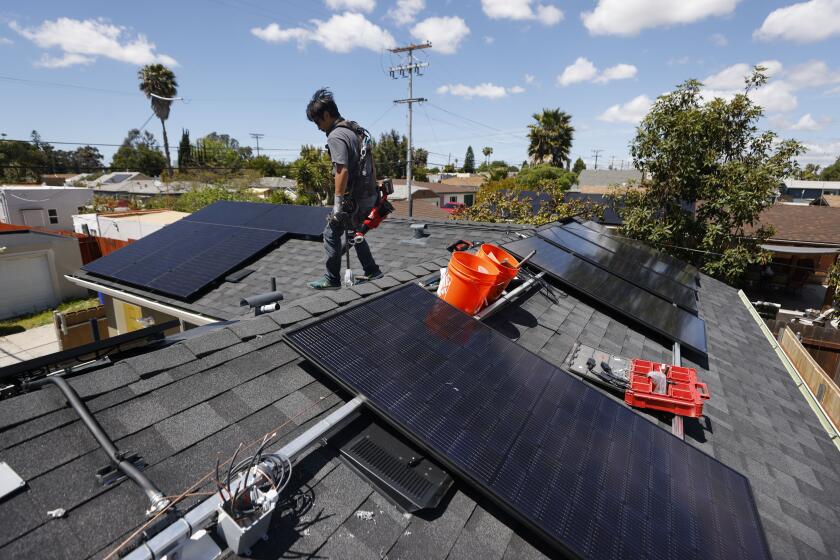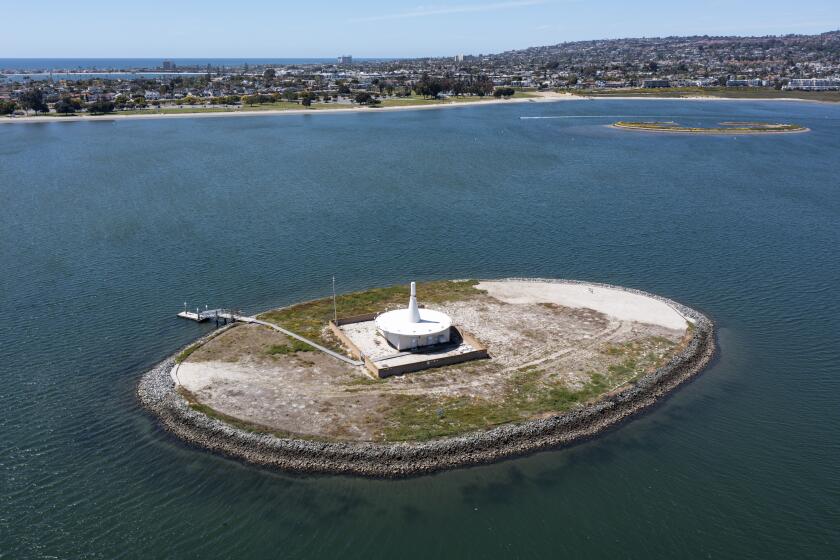Water recycling deal stalls at national level
With broad local support for San Diego’s envisioned water recycling program, Mayor Kevin Faulconer touted the plan again last week — this time as one of his top-funded efforts to fight climate change.
However, his strategy for pulling off the so-called Pure Water program isn’t a done deal.
An agreement between local green groups and government officials that threaded the way for the project’s approval has hit a snag in recent months — one that could unravel regional backing for the program or end up costing residents billions of additional dollars.
When the City Council voted unanimously in 2014 to pursue the $3.5 billion plan to turn sewage into drinkable water, it was with certain assurances from the local environmental community.
Most importantly, organizations such as San Diego Coastkeeper and the Coastal Environmental Rights Foundation in Encinitas convinced elected officials to adopt Pure Water by promising to help shield the city from pressures to upgrade to the Point Loma Wastewater Treatment Plant.
For years, San Diego has faced the possibility of spending $2 billion or more to upgrade the facility, which doesn’t meet federal standards for water quality. Backers of Pure Water said it would not only reduce the amount of sewage treated at the plant from going into the Pacific Ocean, but also provide a sizable and reliable source of locally generated drinkable water for a city that has long relied on imports.
To make sure this strategy is immune to lawsuits, the coalition needs to secure a congressional measure guaranteeing the Point Loma facility can operate as is. Last month, its lobbying campaign for that legislation stalled.
National environmental organizations and others said San Diego’s plan is too risky because it requires an amendment to the federal Clean Water Act.
“[They] expressed serious concern about Republicans being unable to contain themselves if the Clean Water Act was opened up,” said Lani Lutar, a consultant whom the city hired to build state- and national-level support for the Pure Water strategy.
“The plan was postponed due to uncertainty about the preferred path forward,” she added.
Major green groups such as the Natural Resources Defense Council and the Sierra Club pushed back against San Diego’s approach, said Marco Gonzalez, executive director of the Coastal Environmental Rights Foundation and an attorney who has championed the water-recycling program for years.
“The bigger groups who play in D.C. regularly were like, ‘How are you going to manage the likelihood that folks outside your region are going to see it as an opportunity to insert their stuff, and how are you going to get anything done because we’re all playing defense with this [Republican-controlled] Congress?” he said.
Lack of endorsements from these big-league environmental players could doom the amendment’s chances of passing. Or years from now, these organizations could very well sue San Diego to make the expensive Point Loma plant upgrade.
The Natural Resources Defense Council and Sierra Club wouldn’t comment for this story.
San Diegans are already bracing for a 16 percent spike in water rates next year, approved by the City Council to help finance Pure Water. And the program is expected to lead to further double-digit rate hikes in the coming decades.
The threat of shouldering billions more for the Point Loma facility retrofit has given some folks pause.
“If we do Point Loma and Pure Water, I don’t support that,” said James Peasley, chairman of the Metro Wastewater Joint Powers Authority, which represents cities other than San Diego that use the Point Loma wastewater plant.
The authority is negotiating with San Diego to help finance Pure Water in exchange for not having to make improvements to the Point Loma site, said Peasley, who’s also executive director of the Padre Dam Municipal Water District.
“Otherwise, [our member agencies] and ratepayers in San Diego could get hit with a significant amount of increases,” he said.
For more than a decade, San Diego has been able to postpone the retrofit by repeatedly obtaining waivers from the California Coastal Commission and the U.S. Environmental Protection Agency.
While scientific studies have shown that discharges from the Point Loma plant have a negligible effect on the surrounding marine environment, the facility is the only one of its kind left in the nation to not meet federal clean-water standards.
San Diego’s latest waiver application is slated to go before the Coastal Commission next year.
“The concern is 10 years from now,” Lutar said. “There is a very serious fear that there’s going to be an environmental organization at some point in the future that doesn’t know how Pure Water came to be and says, ‘What do you mean you don’t want to [upgrade] Point Loma?’”
Lutar said she plans to resume lobbying in Washington, D.C., after the general elections in November. If Democrats regain majority control of Congress, San Diego could get the opening for its amendment because the big environmental groups might feel more assured that Republicans can’t push through other changes to the Clean Water Act.
“At that point, the coalition-building effort is going to need to be a robust and time-consuming effort,” Lutar said.
Faulconer’s office said it plans to move forward with Pure Water, allocating nearly $90 million for the program in the mayor’s proposed budget for fiscal year 2017.
“While [the congressional] guarantee is preferred, we are confident that the city can continue to receive modified [waivers] into the foreseeable future,” said Craig Gustafson, director of media relations for the mayor.
By 2035, San Diego plans to build three water-recycling facilities that together would produce about a third of the city’s drinkable water.
When completed, the program would divert about 100 million gallons of sewage a day from the facility in Point Loma, which currently processes roughly 180 million gallons.
Under a recently accelerated timeline, the first water recycling plant would be constructed by 2021 at the North City Water Reclamation site near Miramar Road. It would produce about 30 million gallons of drinkable water a day.
Then two more facilities would be built — one at the South Bay Water Reclamation Plant on Dairy Mart Road and the other at the former Naval Training Center grounds on Harbor Drive. Together, they would add 53 million gallons per day to the recycling system.
Get Essential San Diego, weekday mornings
Get top headlines from the Union-Tribune in your inbox weekday mornings, including top news, local, sports, business, entertainment and opinion.
You may occasionally receive promotional content from the San Diego Union-Tribune.

